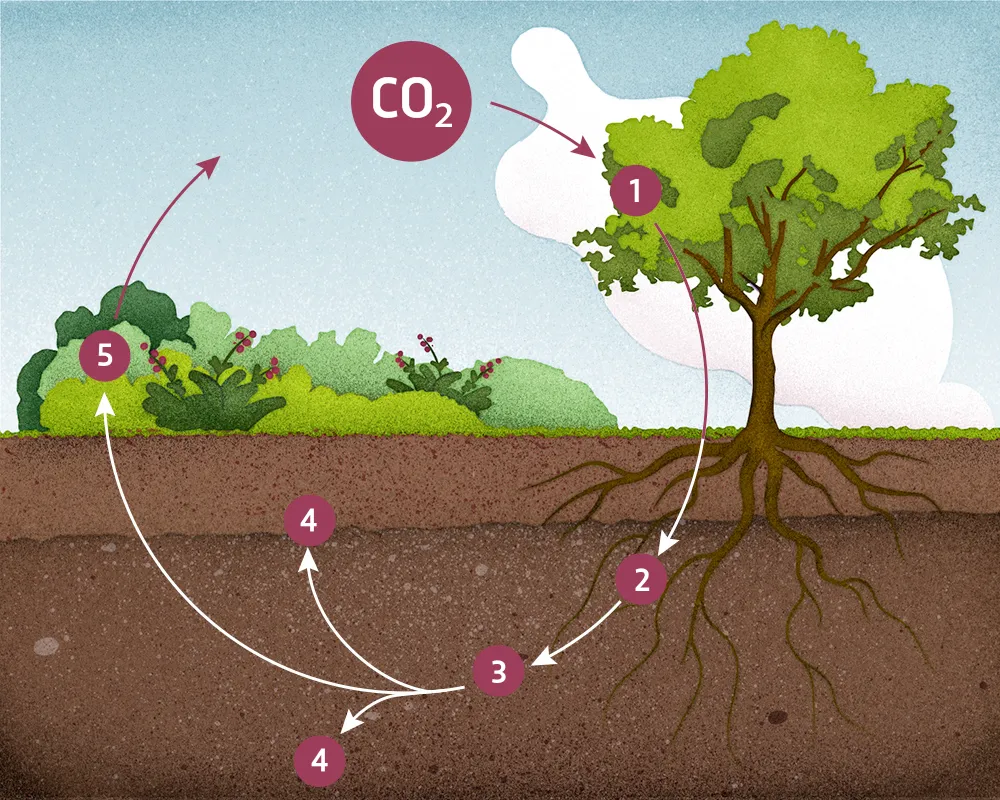Soil locks up carbon but since the invention of agriculture 12,000 years ago, the conversion of natural ecosystems like grassland and forests has released 110 billion tonnes of carbon from the topsoil into the air. Now scientists are looking at different land management techniques that could reverse this process and use the soil as a long-term carbon sink.

1. Productive soil
Only about 42 per cent of the carbon in a forest is contained in the plant matter above the ground. The rest is made up of the roots, soil organisms and partially decomposed matter in the soil.
2. Setting down roots
Plant roots grow into deeper layers of soil. When the plant dies, the carbon in the roots is left there – often out of reach of most of the soil microorganisms that would break down the organic matter.
3. Trapped carbon
Highly decomposed carbon forms particles small enough to chemically bond to the clay in soils, which can stay trapped below ground for hundreds or thousands of years.
4. Going deeper
Some carbon compounds are water-soluble, and rainwater steadily moves them downwards to even deeper rock strata. High organic content in the soil increases water retention, which not only helps to drive this process but makes the land more resistant to droughts.
5. Healthy population
Soils with higher organic carbon content also support a richer population of microorganisms and contain more nutrients. This increases plant growth and creates a virtuous cycle that is good for both farmers and the environment.
Read more:
- Where does soil come from?
- How does geothermal energy work to produce electricity?
- What effect does carbon capture have on atmospheric oxygen?
- Are some plants better than others at sucking up carbon dioxide?
This article first appeared inissue 373ofBBC Science Focus Magazine–find out how to subscribe here

